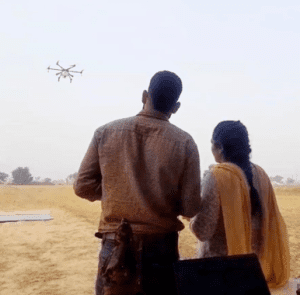GOVERNMENT PLANS TO CHANGE BASE YEAR OF KEY ECONOMIC GAUGES TO FY23
TAG: GS 3: ECONOMY
THE CONTEXT: The Indian government is considering updating the base year for critical economic indices, including the Index of Industrial Production (IIP), Wholesale Price Index (WPI), and National Income, to the fiscal year 2023 (FY23).
EXPLANATION:
- This change aims to better reflect the current structural changes in the economy.
- Currently, these indices use FY12 as the base year, and the Consumer Price Index (CPI) also uses 2012 as its base year.
- The potential shift is part of a broader effort to ensure economic metrics accurately represent contemporary economic realities.
What is a Base Year Benchmark?
- The base year serves as a reference point for measuring changes in economic variables over time, allowing for the comparison of relative performance.
- For instance, real GDP growth is calculated with reference to the prices of the base year.
- Regular updates to the base year are necessary to align indices with the evolving economic structure, capturing shifts in consumption patterns, sectoral weights, and the inclusion of new sectors.
Importance of Regular Updates
- Updating the base year ensures that economic indices reflect current economic conditions and consumption habits.
- This is crucial for accurate policy formulation and economic analysis.
- For example, the previous change in the GDP computation base year from FY05 to FY12 improved coverage of financial corporations, local bodies, and autonomous institutions, and introduced methodological changes that enhanced the accuracy of economic measurements.
Planned Changes to Economic Indices
- Index of Industrial Production (IIP)
- The IIP measures the industrial sector’s performance by tracking the production volume of various industries.
- The update to FY23 aims to incorporate recent changes in the industrial landscape, ensuring that the index accurately reflects the current state of industrial activity.
- Wholesale Price Index (WPI)
- The WPI measures the average change in prices of goods at the wholesale level.
- Updating its base year to FY23 will involve revising the product basket and adjusting item weights to match current market conditions and consumption patterns.
- This update is crucial for reflecting the latest price movements and economic activities accurately.
- National Income
- National Income calculations, which provide a comprehensive measure of a country’s economic activity, will also be updated to FY23.
- This change will ensure that the data accurately represent the current economic environment, including new sectors and industries that have emerged since the last base year update.
- Consumer Price Index (CPI)
- The CPI, a critical measure of inflation and a key input for monetary policy, will undergo significant updates.
- The current CPI basket, which includes outdated items like horsecart fares and VCD players, will be revised to reflect contemporary consumption patterns more accurately.
- The Reserve Bank of India (RBI) uses the CPI as its primary gauge for monetary policy management, making this update essential for effective economic governance.
Rationale for Choosing FY23 as the New Base Year
- Experts advocate for updating the base year every decade to maintain the relevance and accuracy of economic indices.
- FY23 is considered a suitable base year because it did not experience significant droughts or structural economic shocks, providing a stable reference point for comparisons.
Efforts to Revamp Key Datasets
- Wholesale Price Index (WPI) Update
- The Industry Ministry is actively working on updating the WPI series.
- This involves revising the product basket and adjusting item weights to reflect the latest market trends and economic conditions accurately.
- Consumer Price Index (CPI) Overhaul
- A comprehensive overhaul of the CPI is underway, driven by the ongoing consumption expenditure survey for FY23.
- This update aims to modernize the CPI by including relevant products and services that reflect current consumption patterns, ensuring that the index accurately measures inflation and cost-of-living changes.
Index of Industrial Production (IIP):
- IIP is an indicator that measures the changes in the volume of production of industrial products during a given period.
- It is compiled and published monthly by the National Statistical Office (NSO), Ministry of Statistics and Programme Implementation.
- It is a composite indicator that measures the growth rate of industry groups classified under:
- Broad sectors, namely, Mining, Manufacturing, and Electricity.
- Use-based sectors, namely Basic Goods, Capital Goods, and Intermediate Goods.
- Base Year for IIP is 2011-2012.
Wholesale Price Index (WPI):
- It measures the changes in the prices of goods sold and traded in bulk by wholesale businesses to other businesses.
- Published by the Office of Economic Adviser, Ministry of Commerce and Industry.
- It is the most widely used inflation indicator in India.
- Major criticism for this index is that the general public does not buy products at wholesale price.
- The base year of All-India WPI has been revised from 2004-05 to 2011-12 in 2017.
Consumer Price Index (CPI):
- The Consumer Price Index measures the overall change in consumer prices based on a representative basket of goods and services over time.
- It is released by the National Statistical Office (NSO).
- The CPI is the most widely used measure of inflation, closely followed by policymakers, financial markets, businesses, and consumers.
- The widely quoted CPI is based on an index covering 93% of the U.S. population, while a related index covering wage earners and clerical workers is used for cost-of-living adjustments to federal benefits.
- The CPI is based on about 80,000 price quotes collected monthly from some 23,000 retail and service establishments as well as 50,000 rental housing units.
- Housing rents are used to estimate the change in shelter costs including owner-occupied housing that accounts for about a third of the CPI.
- The base year of All-India WPI has been revised from 2004-05 to 2011-12 in 2017.



